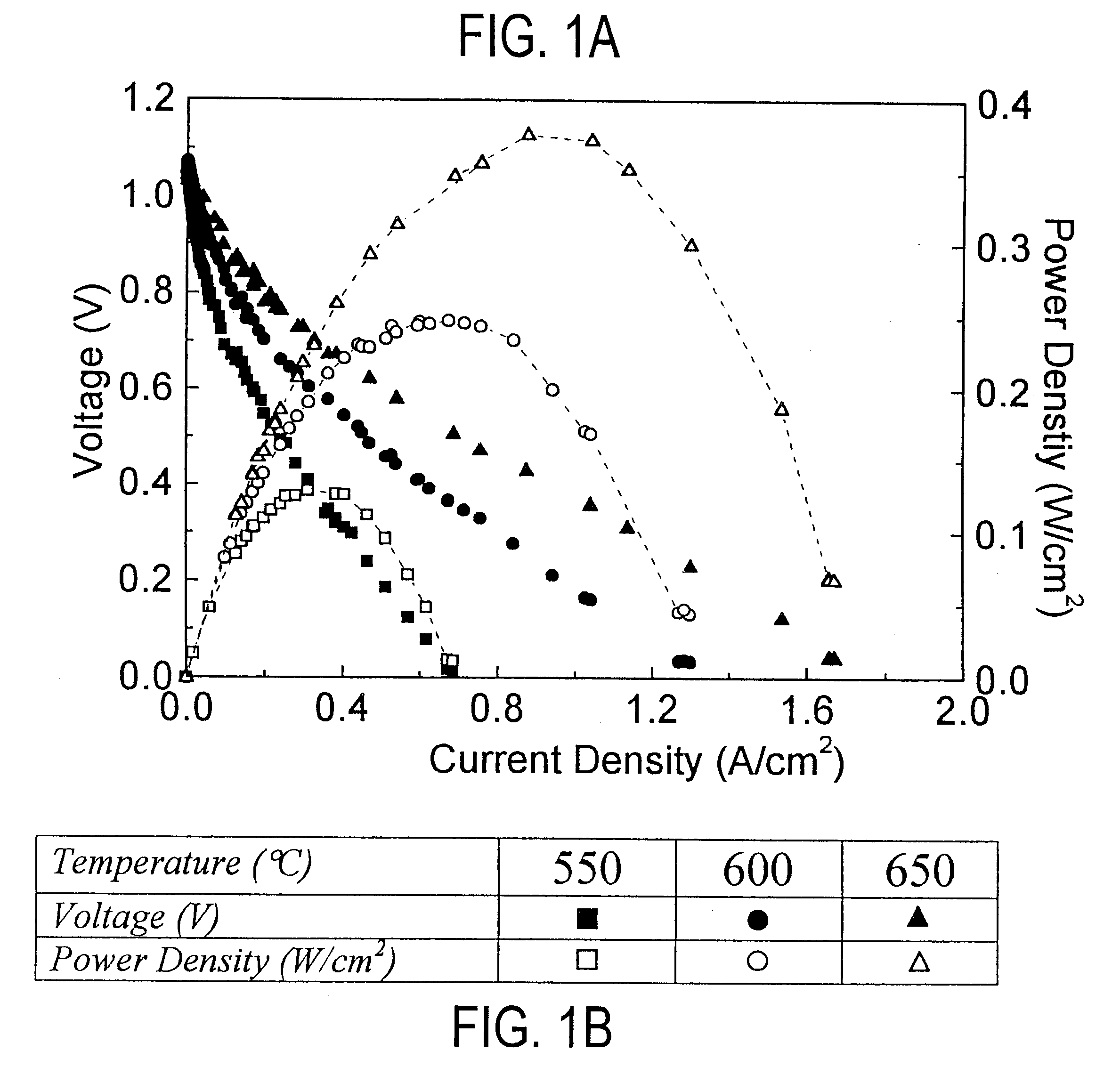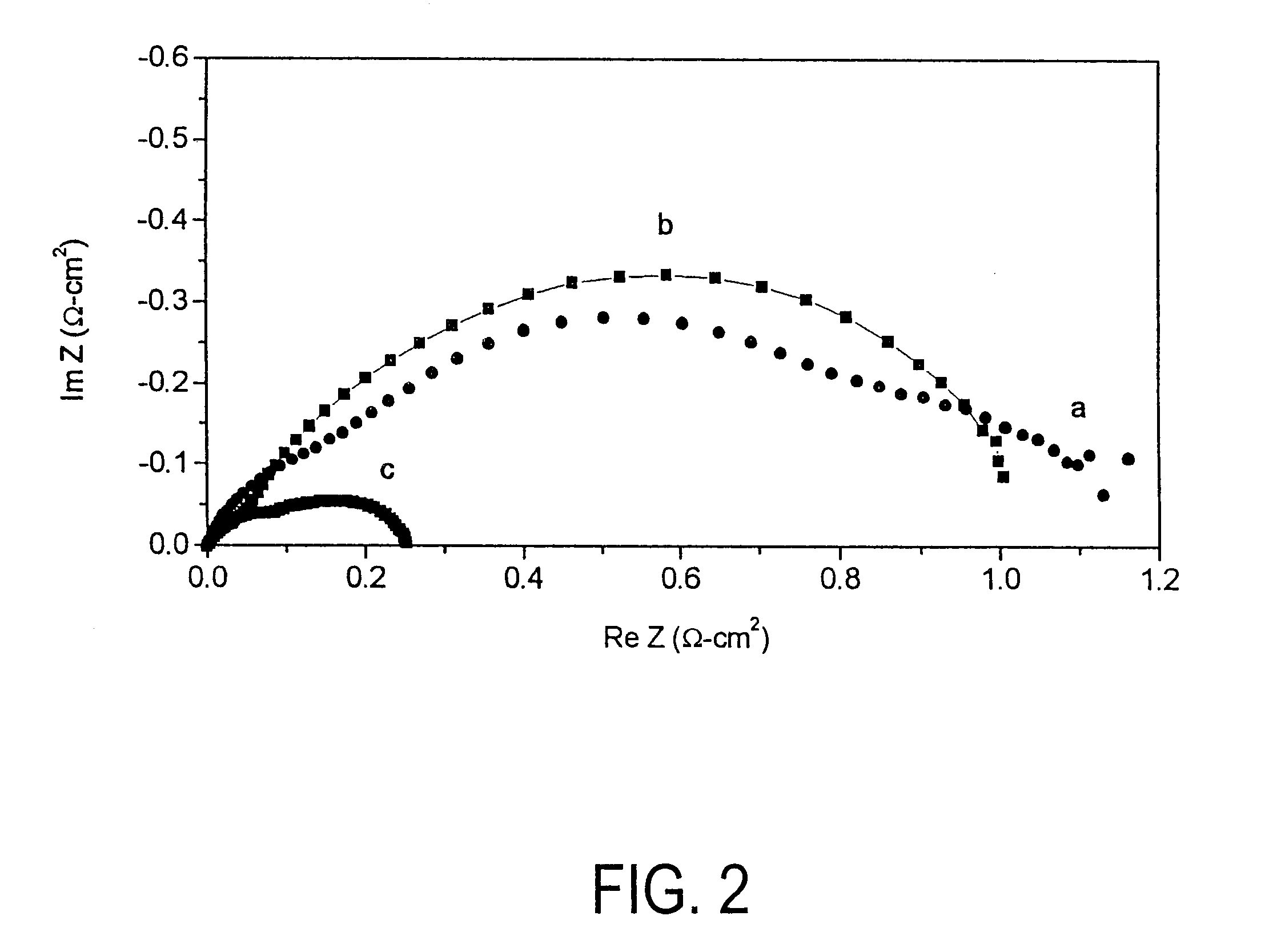Direct hydrocarbon fuel cells
- Summary
- Abstract
- Description
- Claims
- Application Information
AI Technical Summary
Benefits of technology
Problems solved by technology
Method used
Image
Examples
example 1
Single-cell current-voltage measurements were carried out in air and methane. Identical results were obtained for pure and humidified (containing 3% H.sub.2 O ) methane in the early stages of cell tests; while cell performance was stable with dry methane, after .apprxeq.2hrs of testing in humidified methane, cell performance degraded because of oxidation of the anode Ni. FIG. 1 shows the measured current density and power density vs. voltage. The open-circuit voltage (OCV) was 1.06V. The current density vs. voltage curves were non-ohmic indicating a substantial electrode overpotential. Based on prior studies of
these cells operated on hydrogen fuel, the current densities were limited primarily by cathode, overpotential. Current densities increased with increasing temperature, such that maximum power density increased from 250 mW / cm.sup.2 at 600.degree. C. to 370 mW / cm.sup.2 at 650.degree. C.
example 2
By way of comparison, the results of Example 1 were similar to those obtained for cells operated with humidified hydrogen fuel, except that the power densities were .apprxeq.20% greater. Visual observation, energy dispersive x-ray (EDX), and scanning electron microscopy (SEM) observations of the anodes, carried out after the call tests, showed no evidence of carbon deposition after .apprxeq.100 hrs of operation.
example 3
Successful cell operation on dry methane (Example 1) indicated that direct electrochemical oxidation,
CH.sub.4 +2O.sub.2 =2H.sub.2 O+CO.sub.2.DELTA.G.degree.(600.degree. C.)=-800 kJ / mol (3)
was the primary anode reaction mechanism. The OCV values measured in Example 1, .apprxeq.1.06V, were typically very close to the values measured for these cells operated with 97%H.sub.2 +3%H.sub.2 O fuel. This is reasonable given that the .DELTA.G.degree.(600.degree. C.) values are similar for eqn. 3 and hydrogen oxidation. The exact Nernst potential for eqn. 3 cannot be calculated since the, H.sub.2 O and CO.sub.2 partial pressures are not known, but the measured OCV.sub.s suggest reasonable values, <0.18 atm for H.sub.2 O and <0.09 atm. CO.sub.2.
While eqn. 3 shows electrochemical oxidation of methane, it should be noted that the present invention contemplates the possibility of other reaction mechanisms for the desired oxidation products. For instance, various intermediate reactions and / or specie...
PUM
 Login to View More
Login to View More Abstract
Description
Claims
Application Information
 Login to View More
Login to View More - R&D
- Intellectual Property
- Life Sciences
- Materials
- Tech Scout
- Unparalleled Data Quality
- Higher Quality Content
- 60% Fewer Hallucinations
Browse by: Latest US Patents, China's latest patents, Technical Efficacy Thesaurus, Application Domain, Technology Topic, Popular Technical Reports.
© 2025 PatSnap. All rights reserved.Legal|Privacy policy|Modern Slavery Act Transparency Statement|Sitemap|About US| Contact US: help@patsnap.com



